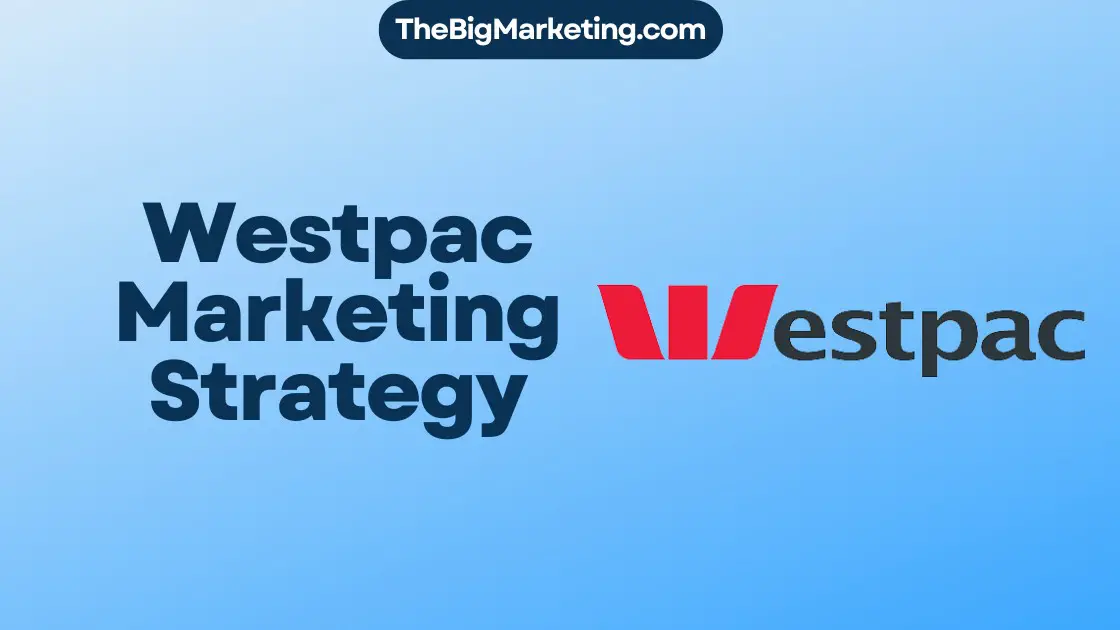Agile marketing is the key to staying ahead in the rapidly evolving digital landscape of 2024. As technology advances and consumer behaviors change, marketing teams must adapt and respond quickly to stay relevant. In this comprehensive guide, we will explore agile marketing strategies and their significance in driving success in the digital age.
Agile marketing is a dynamic approach that empowers marketers to navigate market changes efficiently. By embracing agile methodologies such as lean startup principles, growth hacking techniques, and data-driven strategies, marketers can optimize their digital marketing efforts.
One essential aspect of agile marketing is its customer-centric approach. By understanding and catering to the needs of their target audience through persona-based marketing, marketers can create highly relevant and engaging content. This leads to improved customer satisfaction, increased brand loyalty, and ultimately, higher conversion rates.
Iterative marketing is another fundamental principle of agile marketing. Instead of solely relying on extensive planning and big, risky campaigns, iterative marketing breaks down projects into smaller, manageable tasks. This allows marketers to test different strategies and make data-driven adjustments along the way, ensuring continuous improvement and maximizing campaign success.
Furthermore, agile marketing emphasizes the importance of delivering seamless experiences across multiple channels. With omnichannel marketing strategies, marketers can engage with their audience on various platforms and touchpoints, providing a consistent and cohesive brand experience.
In 2024, data-driven marketing plays a pivotal role in agile marketing strategies. By leveraging analytics and insights, marketers can make informed decisions, optimize campaigns, and drive measurable results. Additionally, staying ahead in the digital age requires a growth mindset and embracing the dynamic nature of the market.
Key Takeaways:
- Agile marketing enables marketers to adapt and respond quickly to market changes.
- Customer-centric approaches and persona-based marketing drive success in the digital age.
- Iterative marketing allows for continuous improvement and data-driven adjustments.
- Omnichannel marketing ensures a consistent brand experience across multiple channels.
- Data-driven marketing and a growth mindset are essential for success in 2024.
The Core Values of Agile Marketing
The Agile Marketing Manifesto lays the foundation for agile marketing strategies by highlighting five core values that drive success in today’s dynamic business landscape.
- Customer-Centric Approach: Agile marketing prioritizes the needs and preferences of customers, placing them at the center of all marketing efforts. By understanding and catering to customer expectations, businesses can create personalized and relevant experiences that resonate with their target audience.
- Iterative Process: Agile marketing adopts an iterative approach, breaking down complex campaigns into manageable components. This allows marketers to continuously refine and improve their strategies based on data, feedback, and market trends. By focusing on short-term goals and delivering incremental value, agile marketing ensures adaptability and flexibility in a rapidly changing environment.
- Clear Goals: Setting clear and measurable goals is crucial in agile marketing. These goals serve as a guiding light throughout the campaign, helping teams stay focused and aligned with business objectives. By defining objectives based on customer needs and aligning them with overall growth targets, agile marketers can prioritize their efforts and optimize resources efficiently.
- Responsive and Engaged Teams: Agile marketing thrives on collaboration and cross-functional teamwork. By fostering a culture of active engagement and responsiveness, businesses create an environment where ideas can be freely shared and collective intelligence can drive continuous improvement. Engaged teams are more likely to experiment, innovate, and adapt to changing market dynamics.
- Embracing Change: In an ever-evolving digital landscape, embracing change is critical to agile marketing success. By being open to new ideas, insights, and market trends, businesses can quickly pivot their strategies to capitalize on emerging opportunities. Embracing change also involves accepting failures as learning experiences and continuously refining marketing approaches for optimal results.
Agile Marketing Methodologies
Agile marketing methodologies provide a structured approach to driving continuous improvement in marketing campaigns. One of the most popular frameworks used is Scrum, which breaks projects into iterative sprints lasting 1 to 4 weeks. This shorter timeframe maximizes agility, allowing marketing teams to adapt and respond quickly to changes in the market landscape.
Within the Scrum framework, there are key roles that play vital parts in ensuring the success of agile marketing projects. The Product Owner acts as the bridge between the marketing team and stakeholders, translating their needs and expectations into clear objectives. The Scrum Master plays a crucial role in guiding the team, ensuring adherence to agile principles, and addressing any obstacles that arise.
The marketing team consists of Developers who work collaboratively to execute tasks efficiently, blending creativity with speed. This cross-functional team brings together diverse skill sets to drive innovation and deliver exceptional marketing campaigns.
To maintain alignment and ensure efficient project execution, various meetings are conducted throughout the sprint cycle. Sprint planning meetings set the direction and goals for each sprint, allowing the team to focus on achievable deliverables. Daily standup meetings enable team members to align, share progress, and identify any potential roadblocks. Sprint review meetings provide a platform for evaluation and feedback, facilitating continuous improvement and informing future iterations of the campaign.
Agile Marketing Methodologies at a Glance
| Methodology | Focus | Key Roles | Meetings |
|---|---|---|---|
| Scrum | Iterative execution | Product Owner, Scrum Master, Developers | Sprint planning, daily standup, sprint review |
| Kanban | Visualize workflow | Manager, Team Members | Continuous flow, daily standup |
| Lean | Eliminate waste | Lean Coach, Team Members | Plan, do, check, act (PDCA) |
By implementing agile marketing methodologies, teams can break down complex campaigns into manageable tasks, respond nimbly to market changes, and deliver value to customers and stakeholders. The iterative nature of these methodologies allows for continuous learning and optimization, leading to more effective and impactful marketing strategies.
Overcoming the Parmenides Fallacy: A Cognitive Bias in Business
The Parmenides Fallacy, named after the Greek philosopher Parmenides, is a cognitive bias that hinders organizations from reaching their full potential. This bias leads to overestimating the risks of taking action and underestimating the costs of inaction. Businesses affected by this fallacy often resist change, leading to missed opportunities and stagnant growth.
To overcome the Parmenides Fallacy, organizations must undergo a fundamental shift in their organizational culture. This includes embracing adaptability, continuous learning, proactive change management, innovation, and data-driven decision-making.
Adaptability: Businesses need to recognize that change is an inherent part of the modern business landscape. By embracing change and being open to new ideas and approaches, organizations can break free from the limitations imposed by the Parmenides Fallacy.
Continuous learning: Constantly acquiring new knowledge and skills is crucial for staying ahead in today’s fast-paced business environment. By investing in employee training and fostering a culture of learning, organizations can overcome the fallacy and adapt to changing market dynamics.
Proactive change management: Anticipating market trends and proactively seeking strategic opportunities allows organizations to stay ahead of the curve. By empowering decision-makers at all levels and integrating risk management into strategic planning, businesses can address the inherent resistance to change associated with the Parmenides Fallacy.
Innovation: Foster innovation by promoting a culture that encourages creative thinking, collaboration with external partners, and integrating innovation as a key performance indicator. By encouraging fresh ideas and exploring new possibilities, organizations can break free from the constraints of the Parmenides Fallacy.
Data-driven decision-making: Emphasize the importance of data analytics in making informed decisions. By leveraging data insights to guide business strategies and continuously monitoring and evaluating performance, organizations can avoid the pitfalls of the Parmenides Fallacy and make better-informed decisions.
Benefits of Overcoming the Parmenides Fallacy
By overcoming the Parmenides Fallacy, organizations can unlock their true growth potential. They can seize opportunities that they might have previously overlooked, mitigating risks by taking well-informed actions. Embracing adaptability, continuous learning, proactive change management, innovation, and data-driven decision-making leads to dynamic growth and a competitive edge.
| Benefits of Overcoming the Parmenides Fallacy: | Challenges of the Parmenides Fallacy: |
|---|---|
|
|
Fostering a Culture of Adaptability
Creating a culture of adaptability is vital for businesses to thrive in the ever-changing landscape of the digital age. It involves embracing change as a constant and encouraging a flexible mindset in both processes and thinking.
Adaptability allows businesses to respond quickly and effectively to market shifts, emerging trends, and customer needs. It enables them to stay ahead of the competition and seize new opportunities for growth.
Embracing change requires a departure from rigid mentalities and a willingness to explore different approaches. By encouraging flexibility, businesses can adapt their strategies to suit evolving circumstances, making necessary adjustments along the way.
In order to foster adaptability, organizations should create a safe-to-fail environment where calculated risks are encouraged. This means creating a space where employees feel empowered to take chances, try new ideas, and learn from both successes and failures.
Such a safe-to-fail environment facilitates innovation and fosters a culture of continuous learning. Rather than viewing failures as setbacks, they are seen as opportunities for growth and improvement. This mindset encourages employees to experiment, iterate, and develop innovative solutions.
Overall, fostering a culture of adaptability requires a shift in mindset and organizational practices. By embracing change, encouraging flexibility, and creating a safe-to-fail environment, businesses can navigate the challenges of the digital age and thrive in an ever-evolving marketplace.
| Key practices for fostering adaptability | Benefits |
|---|---|
| Embracing change as a constant aspect of the business landscape | Ability to respond quickly to market shifts and emerging trends |
| Encouraging flexibility in processes and thinking | Adaptability to evolving circumstances and the ability to make necessary adjustments |
| Creating a safe-to-fail environment | Empowerment for employees to take calculated risks and learn from failures, fostering innovation and continuous learning |
By fostering a culture of adaptability, businesses can position themselves for long-term success in an ever-changing world. Embracing change, encouraging flexibility, and creating a safe-to-fail environment enable organizations to stay agile and thrive amidst uncertainty.
Continuous Learning and Development
Continuous learning and development play a crucial role in overcoming the Parmenides Fallacy and driving success in today’s dynamic business landscape. By investing in employee training and development, organizations can ensure that their teams stay up-to-date with industry trends and innovative practices. This enables employees to adapt their skills and knowledge to the evolving needs of the market, fostering a culture of growth and adaptability.
Learning from both successful and unsuccessful projects is a key aspect of continuous learning. By analyzing past successes, teams can identify strategies and approaches that have worked well and replicate them in future campaigns. Similarly, by examining failures, organizations can understand the factors that led to suboptimal outcomes and learn valuable lessons that can be applied to future endeavors.
Knowledge sharing is another important component of continuous learning and development. When teams across different departments exchange insights and best practices, it enhances the collective understanding and skillset of the organization. This cross-pollination of knowledge fosters collaboration and innovation, enabling employees to leverage each other’s expertise to overcome challenges and drive better results.
The Benefits of Continuous Learning and Development:
- Keeps teams updated on industry trends and innovative practices.
- Fosters a growth mindset by learning from both successful and unsuccessful projects.
- Enhances the collective understanding and skills of the organization through knowledge sharing.
Investing in Employee Training and Development:
Organizations can invest in employee training and development in various ways, including:
- Providing access to industry-relevant resources, such as online courses, workshops, and conferences.
- Implementing mentorship and coaching programs to facilitate knowledge transfer from experienced professionals.
- Encouraging employees to pursue certifications or additional qualifications to expand their skillset.
By prioritizing continuous learning and development, organizations empower their employees to adapt, innovate, and contribute meaningfully to the organization’s success.
| Benefits of Continuous Learning and Development | Investing in Employee Training and Development |
|---|---|
| Keeps teams updated on industry trends and innovative practices. | Providing access to industry-relevant resources, such as online courses, workshops, and conferences. |
| Fosters a growth mindset by learning from both successful and unsuccessful projects. | Implementing mentorship and coaching programs to facilitate knowledge transfer from experienced professionals. |
| Enhances the collective understanding and skills of the organization through knowledge sharing. | Encouraging employees to pursue certifications or additional qualifications to expand their skillset. |
Proactive Change Management
Successful businesses in the digital age understand the importance of proactive change management. By anticipating market trends and leveraging strategic planning, organizations can stay ahead of the competition and seize new opportunities. Empowering decision-making and incorporating risk management into the process are critical components of effective change management.
Anticipating Market Trends
Anticipating market trends is essential for businesses to adapt and thrive in a dynamic environment. Through market research and data analysis, organizations can gain valuable insights into evolving customer needs, emerging technologies, and shifting industry dynamics. By understanding where the market is heading, businesses can position themselves strategically and make informed decisions.
Strategic Planning
Strategic planning sets the foundation for proactive change management. It involves defining clear goals, objectives, and action plans that align with the anticipated market trends. Strategic planning allows organizations to prioritize resources, allocate budgets effectively, and outline key performance indicators (KPIs) to measure success. A well-developed strategic plan provides a roadmap for decision-making and guides the organization towards its desired future state.
Empowering Decision-Making
Empowering decision-making at different levels within the organization promotes agility and responsiveness to change. By empowering teams to make informed decisions, businesses can capitalize on market opportunities more quickly. This decentralization of decision-making fosters a sense of ownership and accountability, resulting in higher employee engagement and more effective problem-solving.
Risk Management
Risk management is a vital aspect of proactive change management. By proactively identifying, assessing, and mitigating risks associated with both action and inaction, organizations can minimize potential negative impacts and optimize outcomes. Implementing risk management strategies ensures that decisions are made based on a comprehensive understanding of potential risks and rewards.
| Benefits of Proactive Change Management | Challenges of Proactive Change Management |
|---|---|
|
|
Continuous Innovation
Continuous innovation plays a crucial role in countering the Parmenides Fallacy and driving business growth in the digital age. Embracing innovative thinking within an organization fosters a culture of creativity, encouraging employees to explore new ideas and push the boundaries of traditional marketing strategies. By challenging conventional norms and embracing novel approaches, companies can stay at the forefront of their industries and adapt to ever-evolving market dynamics.
One effective way to foster innovation is through collaboration with external partners. By engaging with academic institutions, research organizations, or industry experts, businesses can tap into fresh perspectives and insights, gaining access to cutting-edge research and technologies. These collaborations can spark innovative ideas, provide unique problem-solving approaches, and help identify new opportunities for growth.
Furthermore, it is essential to treat innovation as a key performance indicator (KPI) within the organization. By measuring and tracking innovative initiatives, companies can prioritize and allocate resources to drive continuous improvement and growth. Establishing metrics to evaluate the impact of innovation efforts reinforces a culture that values and rewards creativity, ultimately leading to sustained competitive advantage.
To illustrate the importance of continuous innovation, the following table highlights the key benefits and challenges associated with fostering a culture of creativity:
| Benefits of Continuous Innovation | Challenges of Fostering Innovation |
|---|---|
|
|
Continuous innovation requires a proactive mindset, a willingness to take calculated risks, and an environment that encourages and supports creativity. By nurturing innovative thinking, fostering collaboration with external partners, and treating innovation as a KPI, organizations can overcome the Parmenides Fallacy and position themselves for long-term success.
Data-Driven Decision Making
One of the key strategies for overcoming the Parmenides Fallacy in business is data-driven decision making. By utilizing data analytics tools, marketers can gather valuable insights from various sources such as customer data, market trends, and internal processes. These insights serve as a guiding force for making informed decisions, reducing reliance on intuition or assumptions.
With data-driven insights, marketers can identify patterns, trends, and opportunities that may not be immediately apparent. This allows for a more accurate assessment of the potential risks and benefits associated with different marketing strategies. By basing decisions on concrete data, marketers can minimize the bias and uncertainty that often accompany subjective judgments.
Furthermore, data-driven decision making establishes a continuous feedback loop within the marketing process. By regularly monitoring and analyzing data, marketers can evaluate the performance of their strategies and make necessary adjustments to ensure they align with current realities. This feedback loop enables agile decision making, allowing for quick adaptations and improvements in marketing campaigns.
Benefits of data-driven decision making:
- Insights-driven decisions: Data analytics provide meaningful insights that drive informed decision making.
- Reduced reliance on intuition: By relying on data, marketers can reduce subjective biases and make more objective choices.
- Minimization of risks: Data-driven decisions help mitigate risks by identifying potential pitfalls and predicting outcomes.
- Optimized resource allocation: By analyzing data, marketers can allocate resources more efficiently and effectively.
A data-driven approach empowers marketers to continuously evaluate their strategies, refine their tactics, and achieve better results. It enables them to respond quickly to market changes, make informed decisions, and drive growth in the ever-evolving digital landscape.
Agile Marketing: Solution to the Parmenides Fallacy
Agile marketing is a solution to the Parmenides Fallacy, addressing the challenges posed by overestimating risks and underestimating costs. By embracing speed, flexibility, and iterative learning, agile marketing enables businesses to navigate the dynamic digital age.
The core tenets of agile marketing empower teams to quickly identify opportunities or problems, deploy tests, and evaluate results. This speed allows for timely adjustments and minimizes the impact of potential risks. By adapting campaigns in real-time and capitalizing on emerging opportunities, businesses can maintain a competitive edge and drive growth.
Flexibility is another key aspect of agile marketing. This approach acknowledges the ever-changing market landscape and emphasizes the importance of staying nimble. Agile marketers are open to experimentation and adjust strategies based on evolving customer needs and market trends. This flexibility enables businesses to pivot when necessary and seize new opportunities as they arise.
Iterative learning is at the heart of agile marketing. By continuously collecting and analyzing data throughout the marketing process, teams can gain valuable insights and optimize their strategies. This iterative approach allows for ongoing improvement, ensuring that marketing efforts are aligned with business goals and customer preferences.
Through agile marketing, businesses can overcome the Parmenides Fallacy by avoiding stagnation and complacency. Instead of fearing change, agile marketers embrace it as an opportunity for growth and adaptation. They continuously iterate, learn, and evolve their strategies to meet the ever-changing demands of the digital age.
An image representing the agility and adaptability of agile marketing. Alt text: Agile Marketing.
| Benefits of Agile Marketing | Key Principles |
|---|---|
| 1. Speed | 1. Continuous improvement |
| 2. Flexibility | 2. Collaboration and cross-functional teams |
| 3. Iterative learning | 3. Adaptability to change |
| 4. Adaptability | 4. Data-driven decision making |
In addition to these benefits, agile marketing enables teams to respond swiftly to customer feedback and market trends. It fosters a customer-centric approach, ensuring that marketing efforts are tailored to meet the needs and preferences of the target audience. With its emphasis on collaboration and continuous improvement, agile marketing enables teams to stay ahead of the competition and drive sustainable growth.
Overall, agile marketing offers a solution to the Parmenides Fallacy by providing a framework that prioritizes speed, flexibility, and iterative learning. By adopting this approach, businesses can overcome the challenges of the digital age, drive innovation, and achieve long-term success.
Conclusion
Agile marketing strategies are essential in today’s digital age. In a fast-paced and ever-changing business landscape, marketers must embrace adaptability, continuous learning, proactive change management, innovation, and data-driven decision-making. By implementing these adaptive practices, marketers can effectively navigate the complexities of the modern business landscape and drive results.
To stay ahead of the competition, it is crucial to develop an agile marketing strategy that prioritizes customer-centricity and results-driven practices. This approach enables marketers to quickly respond to market changes, identify and seize opportunities, and deliver impactful campaigns.
In conclusion, with an agile marketing strategy, marketers can thrive in the digital age. By staying adaptable, continuously learning, driving proactive change, fostering innovation, and utilizing data-driven insights, marketers can position their businesses for success and achieve their marketing goals.



